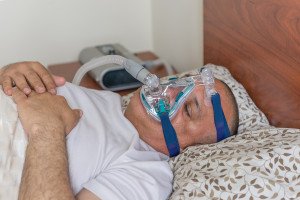Dentistry And The Treatment Of Sleeping Disorders
 Most of us are aware of how sleep is an extremely important and integral component of our overall health and well-being since it accounts for approximately one third of our lifetimes. However, sleep disorders and sleep loss have reached epidemic proportions and it has been estimated that there are anywhere from 50 to 70 million individuals that can be classified as chronic sufferers in the US. Consequently, increasing numbers of doctors and dentists have participated in sleep disorder research and developed effective treatments.
Most of us are aware of how sleep is an extremely important and integral component of our overall health and well-being since it accounts for approximately one third of our lifetimes. However, sleep disorders and sleep loss have reached epidemic proportions and it has been estimated that there are anywhere from 50 to 70 million individuals that can be classified as chronic sufferers in the US. Consequently, increasing numbers of doctors and dentists have participated in sleep disorder research and developed effective treatments.
SRBD’s or Sleep-Related Breathing Disorders should not be taken lightly as they can lead to serious health issues over time. Fortunately, at Community Dental Group, we offer treatment for these different sleep disorders. Oral appliance therapy is one of the primary treatment approaches to certain sleeping disorders including sleep apnea. Ironically, people suffer with this condition for months or even years at a time without ever realizing it.
Although there are different types of sleep apnea, the two most common forms are Central Sleep Apnea (CSA) and Obstructive Sleep Apneas (OSA). There is also a third type known as Mixed Sleep Apnea (MSA) which is basically a combination of CSA and OSA but far less common. In most cases, when sleep apnea is being discussed, people are usually talking about OSA since it is the more common form found throughout the general population.
So how does Obstructive Sleep Apnea differ from Central Sleep Apnea? OSA involves a blockage in the airway which prevents air from entering your lungs. The 3 primary causes are attributed to:
- adults that are overweight
- anatomy of the person’s jaw
- tonsils in children
When the flesh within the airway and the surrounding tissues collapses, this creates an obstruction in the airflow, hence the name Obstructive Sleep Apnea. Although Central Sleep Apnea is characterized by airflow and breathing interruptions like OSA, the causes are very different and in most cases are neurological or related to the brain and the signals it sends. These signals interrupt your breathing as you sleep.
You have two choices for the treatment of sleep apnea. One is an invasive, time-consuming surgical procedure known as “re-contouring” wherein excess flesh from the jaw, nose, throat, or tongue is removed. In addition to being invasive, there is a risk of potential complications with this procedure. Conversely, our dentists prefer to treat sleep apnea by prescribing specialized dental appliances to help you overcome your sleeping disorder.
These devices are inserted in the mouth and help prevent your airway from collapsing while you are sleeping. Not only will you be able to breathe normally, you are ensured of getting a better night’s rest in the process. If you have recently been diagnosed with a sleeping disorder such as sleep apnea, Community Dental Group will help you overcome it and stop the sleep deprivation that is occurring. Contact us today for more information about our non-invasive solutions for sleeping disorders.